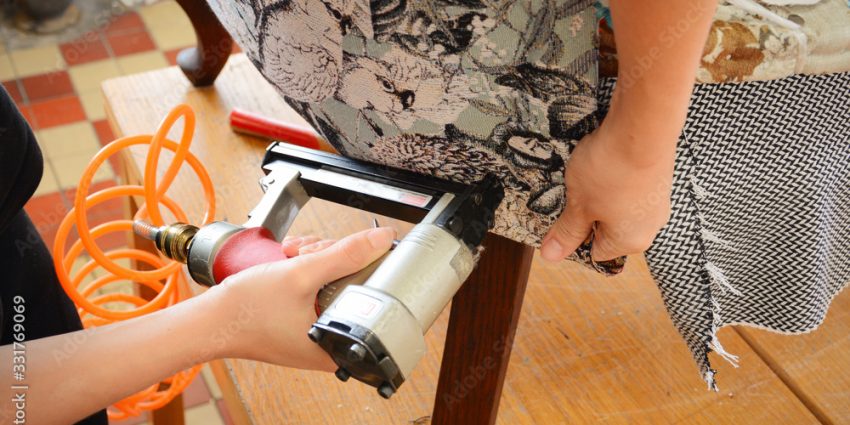Giving old furniture a facelift by recovering it with new fabric is an easy and affordable way to spruce up your home decor. If you’re new to DIY reupholstery projects, don’t worry – recovering furniture is beginner-friendly if you follow some simple steps. In this guide, we’ll walk you through the basic process of reupholstering a chair or sofa.
Step 1: Remove the Old Fabric
Turn your piece of furniture upside down and look for staples, tacks, or nails holding the fabric in place. Use pliers to remove the fasteners and detach the fabric from the frame one section at a time. Work slowly and carefully to avoid damaging the underlying cushioning. Roll up and discard the old fabric once completely removed.
Step 2: Prepare the Frame
With the furniture stripped down to the frame, inspect for any structural damage that needs repairing before recovering. Tighten loose joints, replace broken slats, fill holes, sand rough areas, and apply wood glue where needed. This is also a good time to wipe the frame clean and spray paint it if desired.
Step 3: Add New Padding and Muslin
Most furniture has cotton or foam padding over the frame before the final fabric. Replace any worn-out padding with new batting or foam cut to size. Then cover it all with unbleached muslin fabric, stapling it tightly to the frame to create a smooth surface for the new fabric.
Step 4: Cut and Mount New Fabric
Lay your new fabric over the arm/back/seat sections to measure and cut pieces a few inches larger than needed. Temporarily mount the fabric pieces with spray adhesive or a few pins. Carefully pull and adjust until there are no wrinkles or sagging areas. Permanently attach the fabric with staples, tacks, or a heavy-duty upholstery staple gun.
Step 5: Secure Edges and Corners
For a clean finish, fold over the fabric edges and staple them into place on the underside of the frame. Use scissors to trim excess. For rounded corners, cut triangular notches into the edges before folding under. Add decorative nails, gimp trim, or piping to cover staples and seam edges.
Step 6: Reassemble Furniture
With fabric securely attached, turn your furniture right-side up. Replace legs, cushions, and any other parts previously detached. Make sure weight is evenly distributed and all joints/connections are tight. Add back any skirts, dust covers, or protective accessories.
And that’s it – transforms a shabby sofa or chair into a showpiece! Follow these basic upholstery steps and you can recover furniture like a pro. Customize the look simply by choosing exciting new fabrics. This beginner reupholstery project saves money and lets your creative spirit soar.

